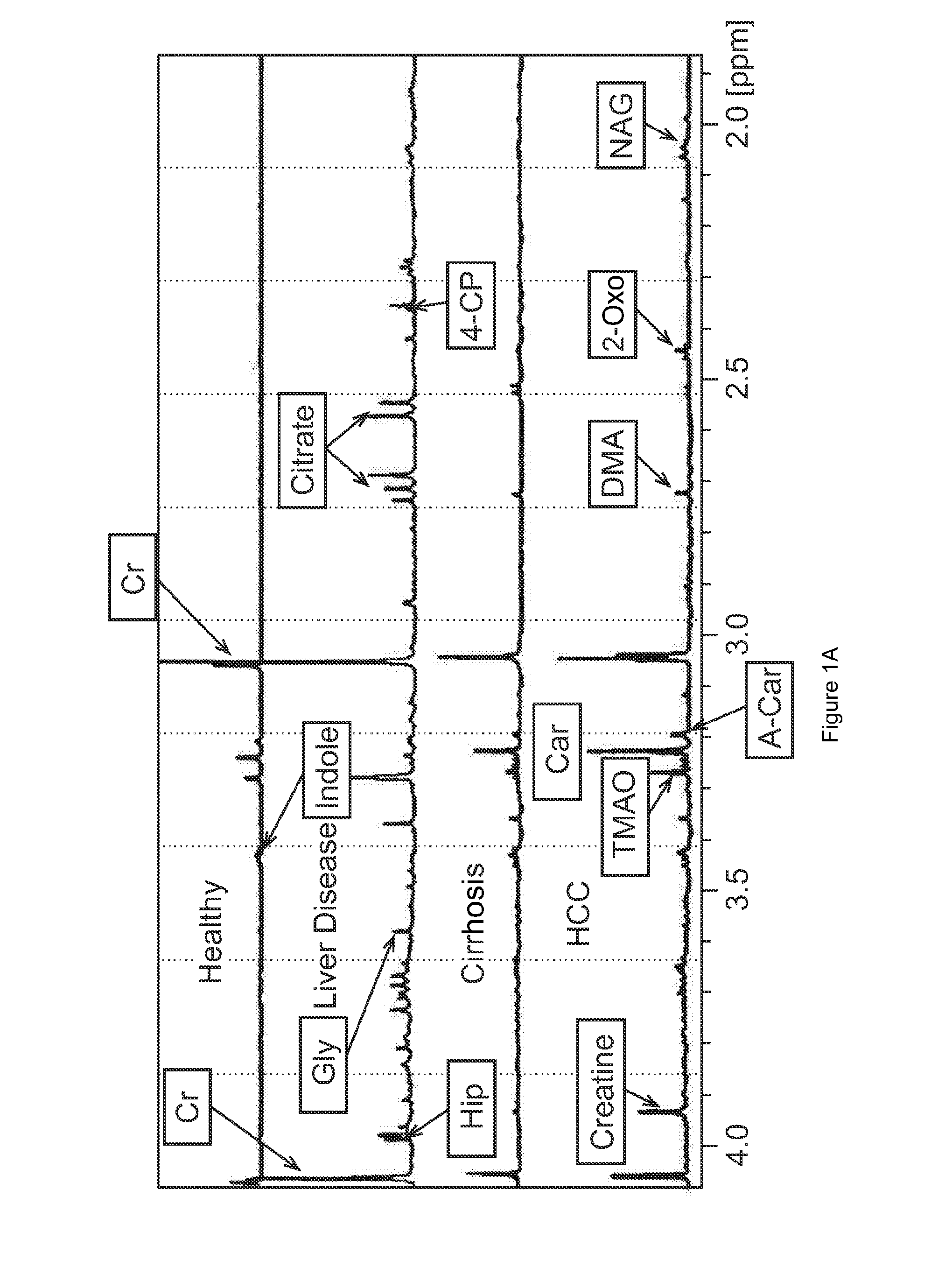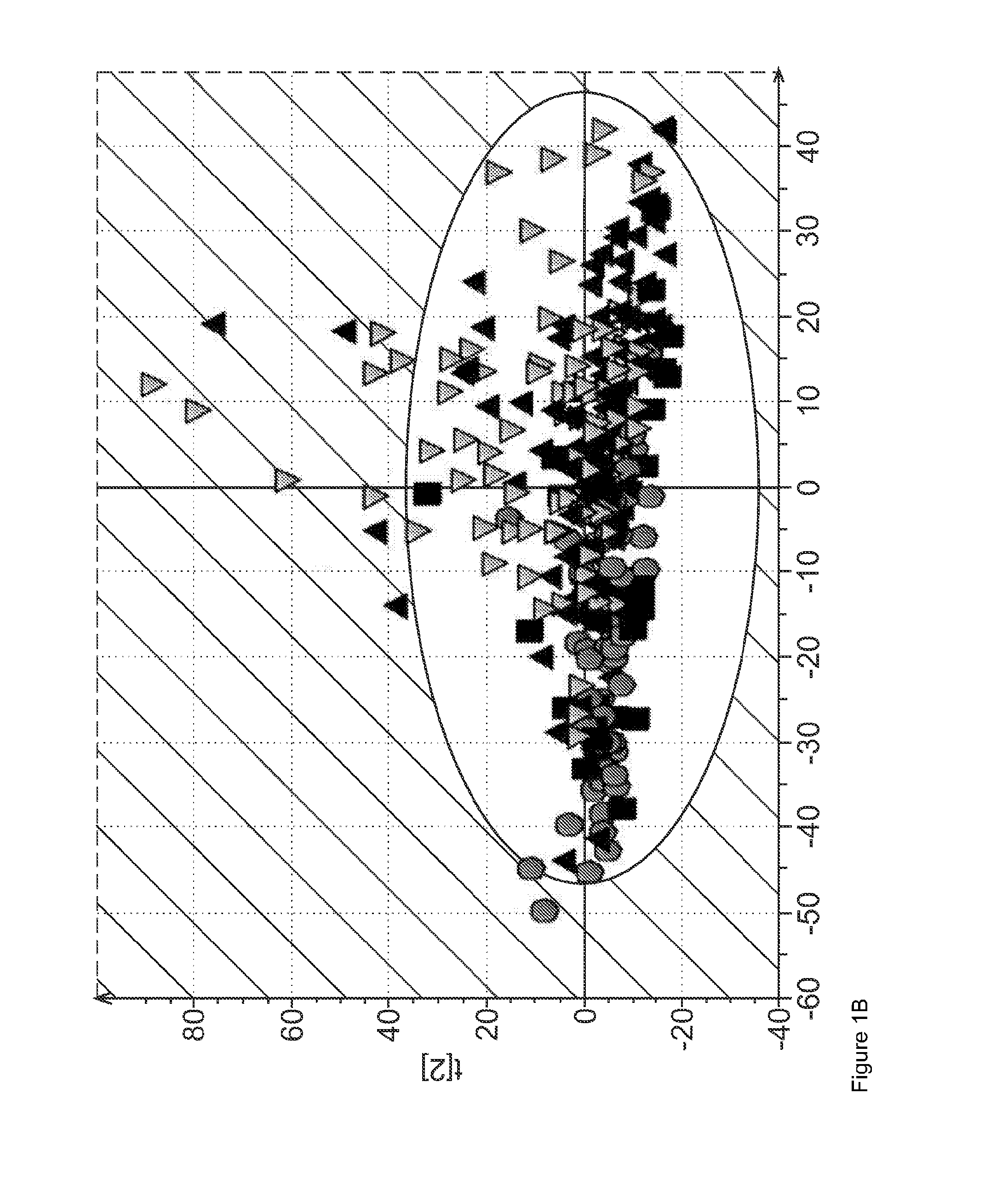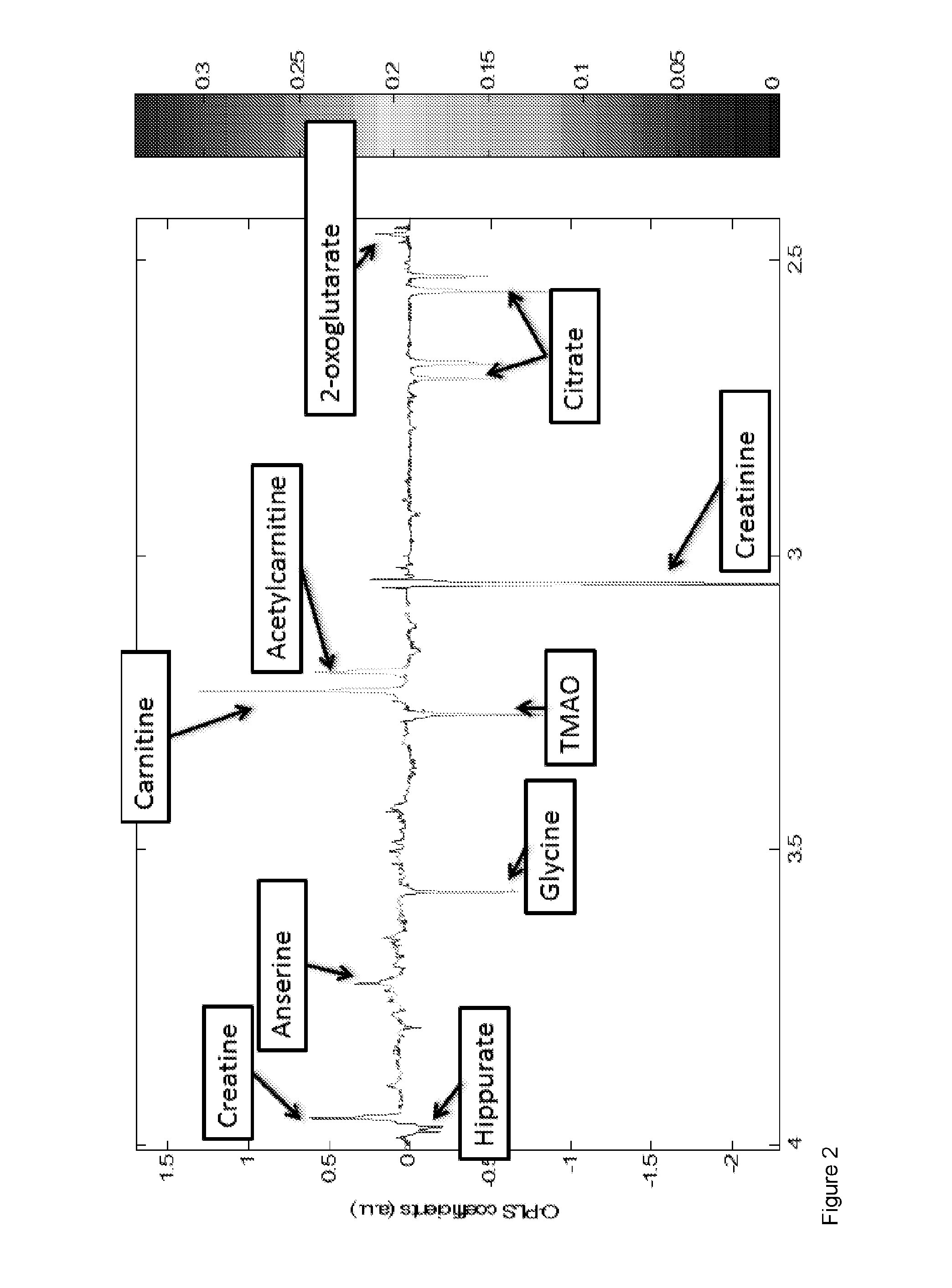Diagnostic method for hepatic cancer
a hepatic cancer and diagnostic method technology, applied in the direction of material testing goods, measurement devices, instruments, etc., can solve the problems of high cost of afp testing, inability to carry out afp testing in parts of africa, and inability to carry out afp testing in africa, so as to achieve the effect of low sensitivity and specificity, and high cos
- Summary
- Abstract
- Description
- Claims
- Application Information
AI Technical Summary
Benefits of technology
Problems solved by technology
Method used
Image
Examples
example 1
Patient Selection
Patient set 1
[0159]A total of 290 West African subjects were recruited at study sites in Nigeria (Jos University Teaching Hospital) and Gambia (Medical Research Council, Fajara, Gambia). This total consisted of 63 HCC subjects; 32 cirrhosis (Cir) subjects; 107 non-cirrhotic liver disease subjects (DC) and 88 healthy subjects (NC) The characteristics of the subjects tested are depicted in Table 1 below.
TABLE 1Clinical and baseline laboratory characteristics of patients and control subjects recruitedat Jos University Teaching Hospital, Nigeria and Medical Research Council, GambiaNon-cirrhoticCirrhosisliver diseaseHealthyHCC subjectssubjectssubjectscontrols(n = 63)(n = 32)(n = 107)(n = 88)Age; yrs(Median, range)46(26-80)39(21-58)37(22-82)41(26-98)Male / Female, n (%)50 / 13(79.4 / 20.6)25 / 7(78.1 / 21.9)58 / 49(54.2 / 45.8)36 / 52(40.9 / 59.1)Okuda stage†Stage I, n (%)2(4.3) / / / Stage II, n (%)26(55.3) / / / Stage III, n (%)19(40.4) / / / Serum AFP values201(0-1,085)150(0.2-853)7(0.2-902)15(1.6-...
example 2
[0162]5 mL of non-fasted urine samples were collected and stored at −80° C. before undergoing air transportation on dry ice. Prior to spectral acquisition, samples were thawed and prepared according to standard methodology19: 400 μL urine sample was mixed with 200 L of phosphate buffer solution (0.2 M Na2HPO4 / 0.04 M NaH2PO4, pH=7.4 plus 0.1% sodium azide, 1 mM 3-trimethylsilyl-1-[2,2,3,3,-2H4]propionate (TSP)) to stabilize the urinary pH. The samples were allowed to stand for 10 min prior to centrifugation at 13000 rpm for 10 min in order to remove insoluble material. 400 μL of the supernatants from each urine sample was aliquoted into 5 mm NMR tubes (Wilmad LabGlass™, New Jersey, USA) for proton nuclear magnetic resonance (1H NMR) analysis.
example 3
1H NMR Spectroscopy Spectral Acquisition and Processing
[0163]Samples were run in a random, non-grouped order. 1H NMR spectra were acquired using a Bruker Avance 600 MHz NMR spectrometer operating at 600.13 MHz for 1H at 300 K equipped with a 5 mm broad-band inverse configuration probe. Samples were randomly analysed in automation with a B-ACS 60 sample changer system. Samples were analysed using water suppressed 1D NMR spectrum using the NOESYPRESAT pulse sequence (256 transients)20. Irradiation of the solvent (water) resonance was applied during presaturation delay (2.0 s) for all spectra and for the water suppressed 1D NMR spectra also during the mixing time (0.1 s). The pulse sequence parameters including the 90° pulse (˜10 μs), pulse frequency (˜4.8 ppm), receiver gain (˜200), and pulse powers were optimised for each sample set run. The spectral width was 20 ppm for all spectra.
[0164]The NMR data were processed with an exponential line broadening of 1.0 Hz prior to Fourier trans...
PUM
| Property | Measurement | Unit |
|---|---|---|
| colorimetric | aaaaa | aaaaa |
| colour | aaaaa | aaaaa |
| weight loss | aaaaa | aaaaa |
Abstract
Description
Claims
Application Information
 Login to View More
Login to View More - R&D
- Intellectual Property
- Life Sciences
- Materials
- Tech Scout
- Unparalleled Data Quality
- Higher Quality Content
- 60% Fewer Hallucinations
Browse by: Latest US Patents, China's latest patents, Technical Efficacy Thesaurus, Application Domain, Technology Topic, Popular Technical Reports.
© 2025 PatSnap. All rights reserved.Legal|Privacy policy|Modern Slavery Act Transparency Statement|Sitemap|About US| Contact US: help@patsnap.com



